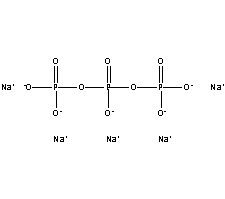STPP
-
Post Date:
Apr 20,2025
-
Expiry Date:
Apr 27,2025
-
Detailed Description:
Cas No. :7758-29-4
Quantity: 500Metric Tons
Specs:98.5%-99%
Price:800 USD Metric Tons
Payment Method: L/C, TT
CAS Number:10124-56-8Other names:sodium tripolyphosphate, polygon, STPP
CAS Number:7758-29-4
PubChem:517047
Chemical formula:Na5P3O10
Appearance:white powder
In detergents
The majority of STPP is consumed as a component of commercial detergents. It serves as a "builder," industrial jargon for a water softener. In hard water (water that contains high concentrations of Mg2+ and Ca2+), detergents are deactivated. Being a highly charged chelating agent, TPP5− binds to dications tightly and prevents them from interfering with the sulfonate detergent.
Food applications
STPP is a preservative for seafood, meats, poultry, and animal feeds.[5] It is common in food production as E number E451. In foods, STPP is used as an emulsifier and to retain moisture. Many governments regulate the quantities allowed in foods, as it can substantially increase the sale weight of seafood in particular. The United States Food and Drug Administration lists STPP as "generally recognized as safe.".
Other uses
Other uses (hundreds of thousands of tons/year) include ceramics (decrease the viscosity of glazes up to a certain limit), leather tanning (as masking agent and synthetic tanning agent - SYNTAN), anticaking, setting retarders, flame retardants, paper, anticorrosion pigments, textiles, rubber manufacture,fermentation, antifreeze."[5] TPP is used as a polyanion crosslinker in polysaccharide based drug delivery.
Chemical formula:Na6P6O18
Appearance:White crystals
Use
SHMP is used as a sequestrant and has applications within a wide variety of industries, including as a food additive in which it is used under the E number E452i. Sodium carbonate is sometimes added to SHMP to raise the pHto 8.0–8.6, which produces a number of SHMP products used for water softening and detergents.
A significant use for sodium hexametaphosphate is as a deflocculant in the production of clay-based ceramicparticles.[3][4][5][6] It is also used as a dispersing agent to break down clay and other soil types.[7]
It is used as an active ingredient in toothpastes as an anti-staining and tartar prevention ingredient.[8]
Food additive
Artificial maple syrup, canned milk, cheese powders and dips, imitation cheese, whipped topping, packaged egg whites, roast beef, fish fillets, fruit jelly, frozen desserts, salad dressing, herring, breakfast cereal, ice cream, beer, and bottled beverages, among other foods, can contain sodium hexametaphosphate.
-
CAS Registry Number:
7758-29-4
-
Synonyms:
;pentasodium triphosphate;Pentasodium Tripolyphosphate;Sodium Phosphate Tripoly;STPP;Triphosphoric acid, pentasodium salt;Pent-sodium Phosphate;Sodium triphosphate;Sodium Tripolyphos;sodium phosphate (3:1);
-
Molecular Formula:
Na5P3O10
-
Molecular Weight:
367.86413
-
Molecular Structure:

-
Hazard Symbols:
 Xi:Irritant;
Xi:Irritant;
-
Risk Codes:
R36/37/38:;
-
Safety Description:
S24/25:;
Inquiry

Xi:Irritant;